Trial and Error
By I. A. Rehman | Law | Published 6 years ago
The public is behaving as if this is the first time that the judiciary has ever been on trial in Pakistan. With the exception of some brief periods of respite, the supreme defender of the Constitution and the rights of the people has been on trial for most of Pakistan’s lifeline – the only difference is that the nature of its trial has been changing.
Successive governments have tried to appoint individuals they like as judges and attempted to remove from the bench those that they do not. The disposition of the various regimes and the degree of their capacity to accept the rule of law, has determined the range of freedom and independence allowed to the judiciary.
The first manifestation of this tussle between the government and the judiciary came when the senior-most judge of the apex court, who happened to belong to East Bengal, was prevented from succeeding Sir Abdur Rashid as chief justice and Justice Muhammad Munir instead, was chosen to fill the vacancy. Justice Munir amply justified the ruling coterie’s trust in him.
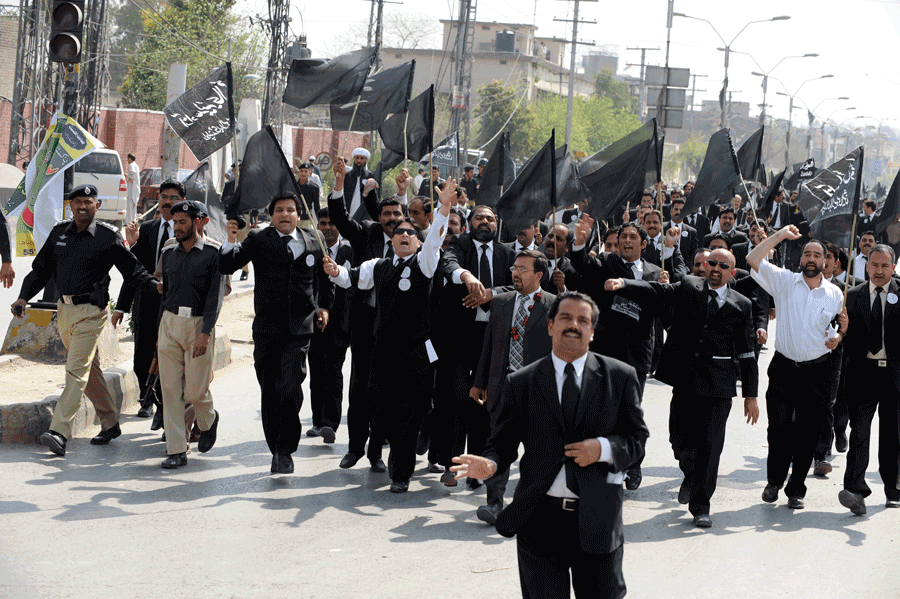
The defining moment: A lawyers’ protest rally in Rawalpindi on March 10, 2008, against the detention of then Supreme Court Chief Justice, Iftikhar Muhammad Chaudhry, that finally led to to his reinstatement.
The governor-general’s arbitrary dissolution of the Constituent Assembly in 1954 presented an unprecedented challenge to the judiciary and it suffered a split. While the Sindh Chief Court upheld the Constitution, the federal court, under Justice Munir, came to the rescue of the government, at the cost of repudiating the Quaid-i-Azam’s claim that Pakistan had become an independent state in 1947.
The apex court was again put on trial when President Iskander Mirza abrogated the Constitution, which was enforced only 30 months earlier. But before it could do anything, General Ayub Khan complicated matters by describing the second coup of 1958 as a bloodless revolution. Justice Munir dug out a little-known theory that legitimised every extra-constitutional change that could succeed. Not only that, the great jurist presented the military dictator with the gift of Laws Continuance in Force Order that continued to serve Ayub Khan’s successors in the dictatorial order.
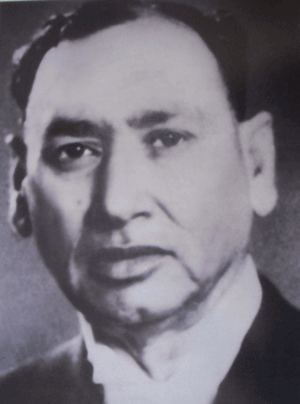
Justice Muhammad Munir presented Ayub Khan with the gift of Laws Continuance in Force Order, which continued to serve the latter’s successors in the dictatorial order.
Justice M. R. Kayani, who used his sharp wit to keep the nation’s conscience alive during the Ayub era, once observed that the judiciary had been on the sick bed for a considerable period. The reason was that Ayub Khan had succeeded in bypassing the judiciary’s assertion of its right to judicial review, by extending the executive’s authority to appoint judges and had started interviewing the candidates himself.
While Ayub Khan and Yahya Khan derived their powers to deal with the judiciary from their own proclamations, the Bhutto government used its majority in Parliament to tame the courts by laying down unfair rules for the judges’ transfers and retirement.
But what was done to the judiciary by General Zia-ul-Haq had no precedent in the country’s history. He relieved the chief justice of the Federal Shariat Court when he was about to pen a verdict the dictator did not like and he invented a way of removing judges by not inviting them to take fresh oaths of office under a Provisional Constitution Order issued by him. The precedent set by him was followed with a vengeance by General (R) Pervez Musharraf, but his failure to appreciate the change in the mood of the public and the superior judiciary, led to his eventual downfall.
As was aptly observed by Makhdoom Ali Khan, in his detailed introduction to the Constitution of 1973, the courts could defy the rulers if the people were demanding justice on the streets. This was confirmed when the Supreme Court declared General Yahya Khan a usurper (Asma Jilani vs the Federation).
Musharraf made the mistake of sidelining Chief Justice Iftikhar Muhammad Chaudhry, at a time when the people, by and large, had had enough of his intrigues and the superior judiciary found an opportunity to give up its policy of acquiescence.
Up to this point in the country’s history, the judiciary had quietly succumbed to the rulers’ diktat. The Supreme Court had denied relief to Nusrat Bhutto on grounds of a lack of jurisdiction and given relief to the respondent (the chief martial law administrator) and allowed him the power to amend the Constitution, because then chief justice Anwar-ul-Haq could not resist Zia’s command and threat.
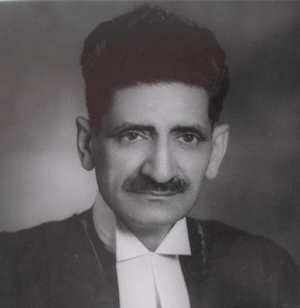
Justice M. R. Kiyani once observed that the judiciary had been on the sick bed for a considerable period, because Ayub Khan had bypassed the process of judicial review.
The judiciary’s attitude from 1954 to 2007 had largely been determined by the judges’ desire to save whatever they could of the legal order. This was the view taken by the judges who took oath under the PCOs and by the same token, the judges that were dropped went home without protest. A change came during the Musharraf regime, when a group of judges led by Justice Saeeduzzaman and Justice Nasir Aslam Zahid, refused to take oath under a PCO.
This was a defining moment in the history of the judiciary. Deriving strength from people’s support, as revealed through the lawyers’ movement, the judges decided to stick together and call Musharraf’s bluff. Justice Chaudhry returned to his post and the government-judiciary tussle took a new turn. For years, politicians had been seeking the judiciary’s intervention in political matters, whereas now the judiciary was able to intervene in political matters on its own.
A weak government was unable to enforce the 18th Amendment for appointments to the superior judiciary and the latter had the plan revised so that the judiciary enjoyed complete autonomy in the selection and appointment of judges.
The revived and rejuvenated Supreme Court under Justice Chaudhry put itself on trial by extending the limits of judicial activism. It was not content with its almost unlimited suo motu powers in cases filed under the human rights category. It felt the need to go a step further and reform the government, by purging it of inefficient and corrupt elements.
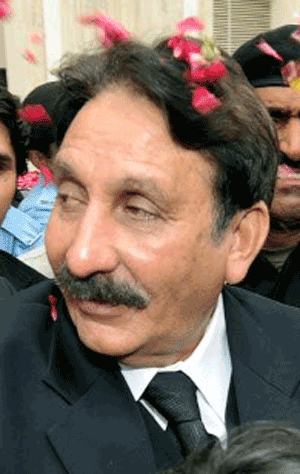
The Supreme Court under Justice Iftikhar Muhammad Chaudhry put itself on trial by extending the limits of judicial activism and going so far as to attempting to reform the government.
Justice Chaudhry’s successors tried to retreat from the high road of activism but then Saqib Nisar, as chief justice, took full advantage of the weaknesses and inefficency of the government and raised the banner of judicial populism under which the Supreme Court undertook much that did not fall under its normal jurisdiction. In a way, it put itself to a test it could not win and Justice Asif Saeed Khosa, who followed him in the chief justice’ s post, vowed to limit the Supreme Court’s functions to its primary task – namely, the dispensation of justice.
Circumstances have, however, put the judiciary on trial yet again. An apparently strong government has chosen the path treaded by European dictators in the 1930s and has resolved to use the courts to secure its political ends to an extent greater than even Zia. The whole exercise is orchestrated by the information monoply in the country. The state is in the grip of hysterical populism on the one hand and is buffetted by a grossly inflated sense of self-righteousness on the other. In this lies a great challenge to the judiciary.
The judiciary’s predicament can easily be seen in the working of the Supreme Judicial Council over the last few years. Several complaints were received against Justice Shaukat Aziz Siddiqui of the Islamabad High Court that raised questions related to his integrity and eligibility to stay on the bench. He used the delay in the hearing to demand a public hearing, while his supporters ran a campaign in mosques that claimed he was being punished for writing an extraordinary judgment in a blasphemy case. No action was taken against the pressure exerted on the Supreme Judicial Council and its member-judges. Then, he was quickly sacked for having maligned the army.
If this was not a clear indication of the way the wind was blowing, the Justice Faez Isa case came as an eye-opener. His call for accountability of some state functionaries involved in the Faizabad dharna, raised a storm of protest and no less than eight petitions were filed in the Supreme Court seeking to get some of Justice Isa’s directives and remarks expunged.
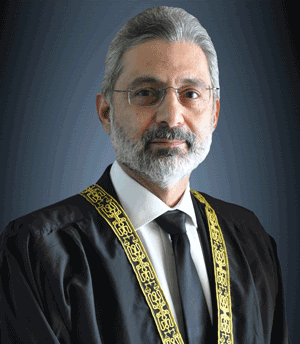
After Justice Qazi Faez Isa’s call for accountability of some state functionaries, no less than eight petitions were filed in the SC, seeking to get some of his directives expunged.
The establishment apparently did not wish to wait for the disposal of these petitions and the president was persuaded to hurriedly file references in the Supreme Judicial Council, against Justice Faez Isa and Justice K. K. Agha.
It will not be possible for some time now to make an honest comment on this case, though it has compelled the doyen of the lawyers’ community, Abid Hasan Minto, to address a few questions to the Council. That is where the people’s case rests at the moment. Its outcome will show the extent to which the judiciary can remain true to its oath to uphold the constitution. One does hope that senior judges will not fail to rise to the occasion, but there can be no doubt about the extraordinary courage they will need.
Mr. I.A. Rehman is a writer and activist living in Pakistan. He is the secretary general of the Human Rights Commission of Pakistan Secretariat.


